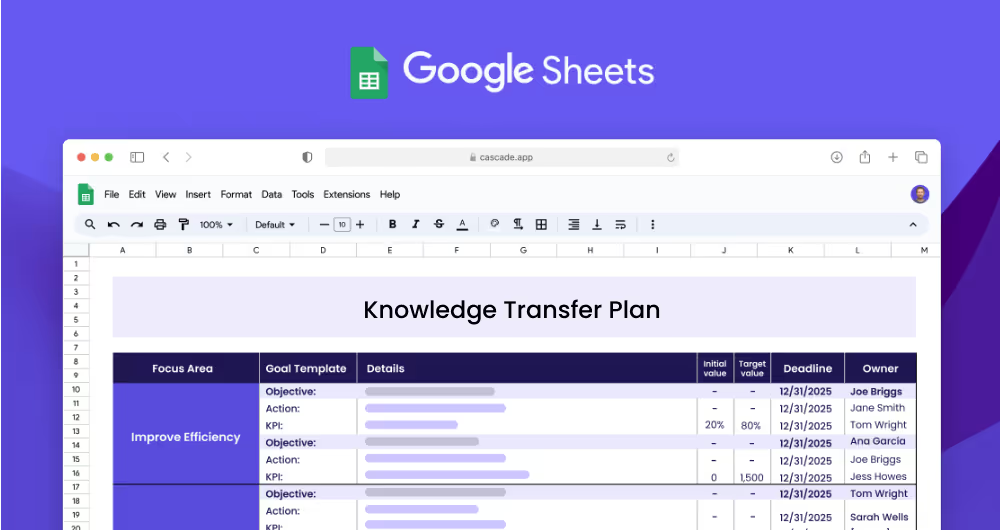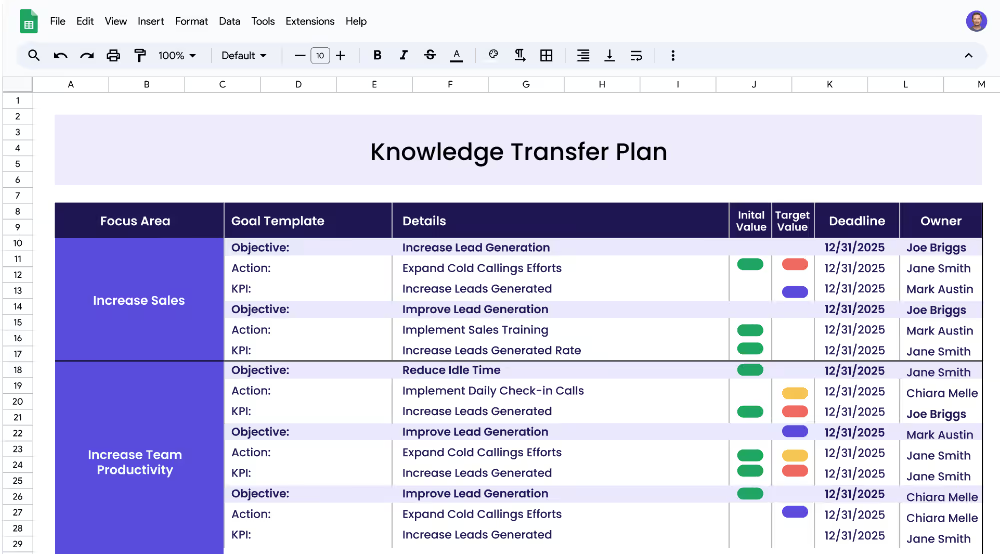A knowledge transfer plan outlines the steps and processes for transferring knowledge to new employees or departments. It is a critical part of onboarding and training, and helps ensure that organizational knowledge is shared in a consistent, efficient manner. It includes actionable steps and measurable targets that help ensure knowledge is transferred effectively.
Each focus area has its own objectives, projects, and KPIs to ensure that the strategy is comprehensive and effective.
This knowledge transfer plan template is designed to help organizations of all sizes and industries to create a plan to transfer knowledge to new employees or new departments. The template provides a framework for creating a comprehensive plan that includes clear objectives, measurable targets, and related projects that can be implemented.
The first step when creating a knowledge transfer plan is to define the focus areas. Focus areas are broad categories that provide an overall context for the plan. These should be based on the organization's goals and should be clearly defined. For example, some common focus areas for knowledge transfer plans are knowledge transfer, training, and documentation.
Once the focus areas are determined, the next step is to think about the objectives that could fall under each focus area. Objectives are more specific targets that help to achieve the focus areas. Objectives should be measurable and actionable, and they should be specific enough to help ensure that the organization is on track to achieve its goals.
Examples of some objectives for the focus area of Knowledge Transfer could be: Improve onboarding process, and Improve internal knowledge sharing .
The next step is to set measurable targets, also known as Key Performance Indicators (KPIs). KPIs are measurable targets that help to track progress towards the objectives. They should be specific, measurable, and actionable, and they should be set in such a way that progress can be tracked over time.
An example of a KPI for the focus area of Knowledge Transfer could be: Decrease onboarding time from 5 days to 3 days.
Once the KPIs are set, the next step is to implement related projects to achieve the KPIs. Projects are actionable steps that help to achieve the objectives and KPIs. Projects should be tailored to the specific objectives and should be broken down into smaller tasks that can be completed in a timely manner.
An example of a project related to Knowledge Transfer could be: Create a knowledge transfer plan.
If you’re ready to accelerate your strategy beyond the traditional spreadsheet limitations and ensure real-time updates along with centralized collaboration, Cascade Strategy Execution Software could be the ideal choice. This platform not only enhances visibility through visual dashboards but also integrates strategic planning with execution. Say goodbye to the cumbersome, error-prone spreadsheets and hello to a streamlined, error-free process. Sign-up for free or book a demo with one of our strategy experts to see how we can help evolve your strategic plans to the next level.


